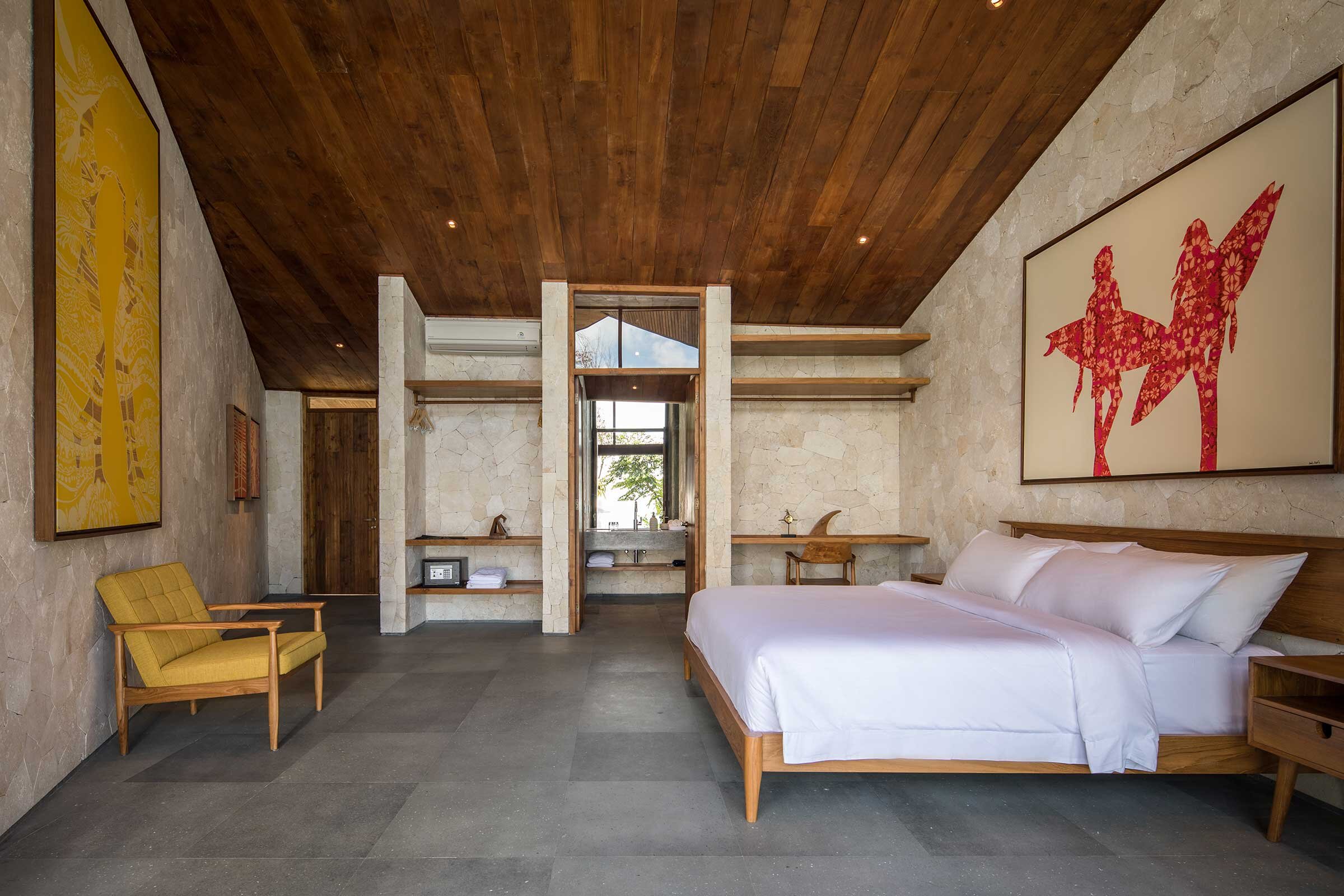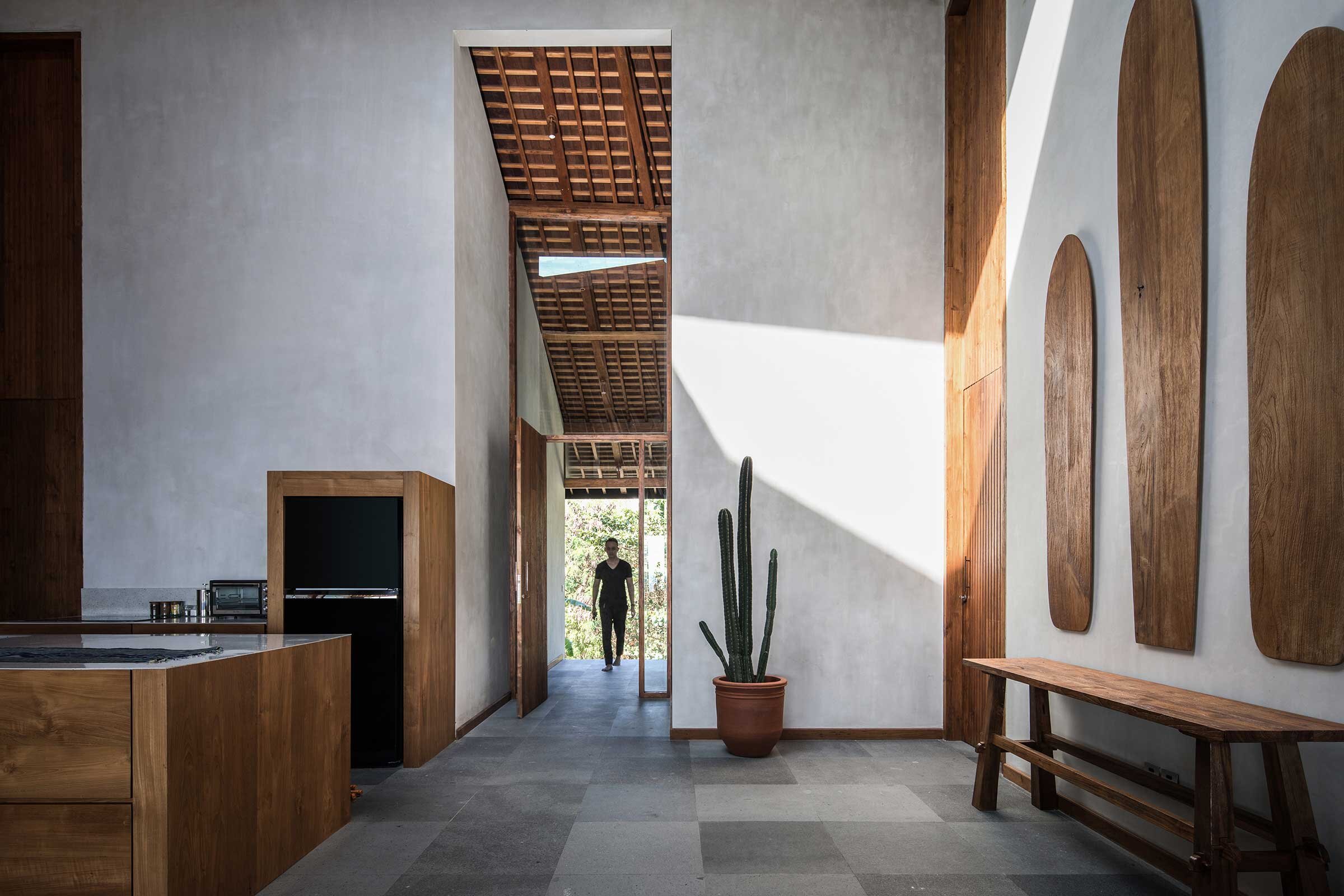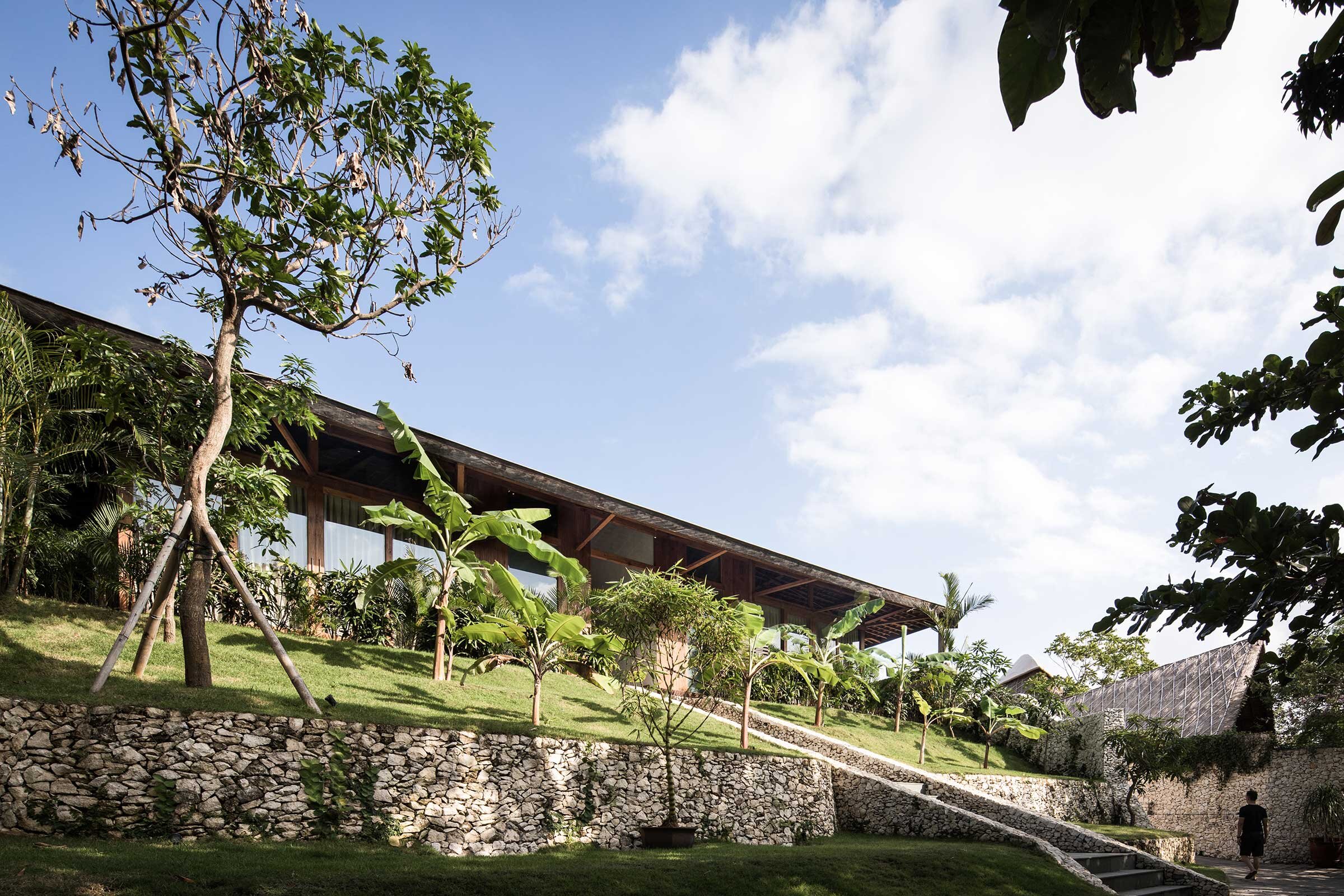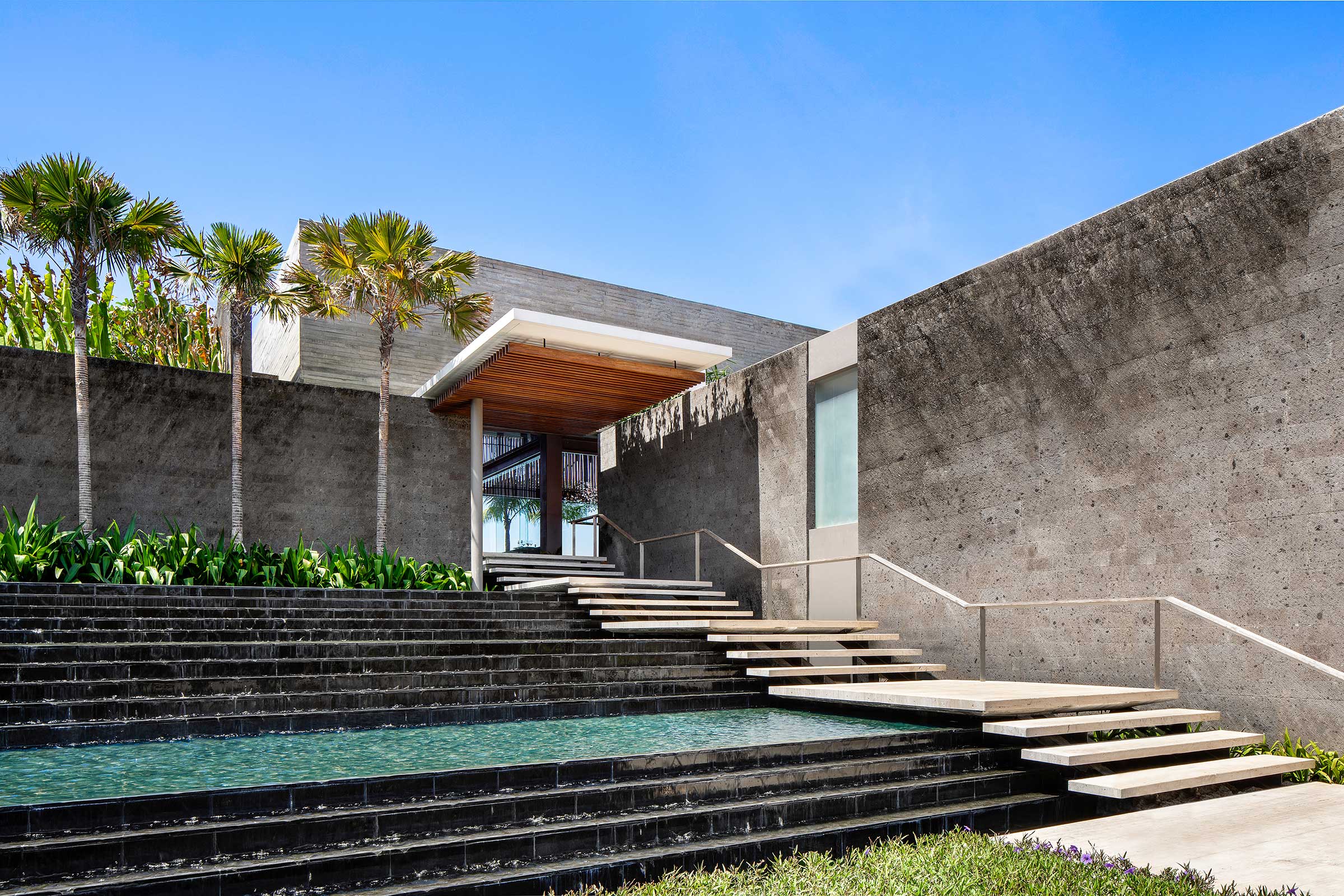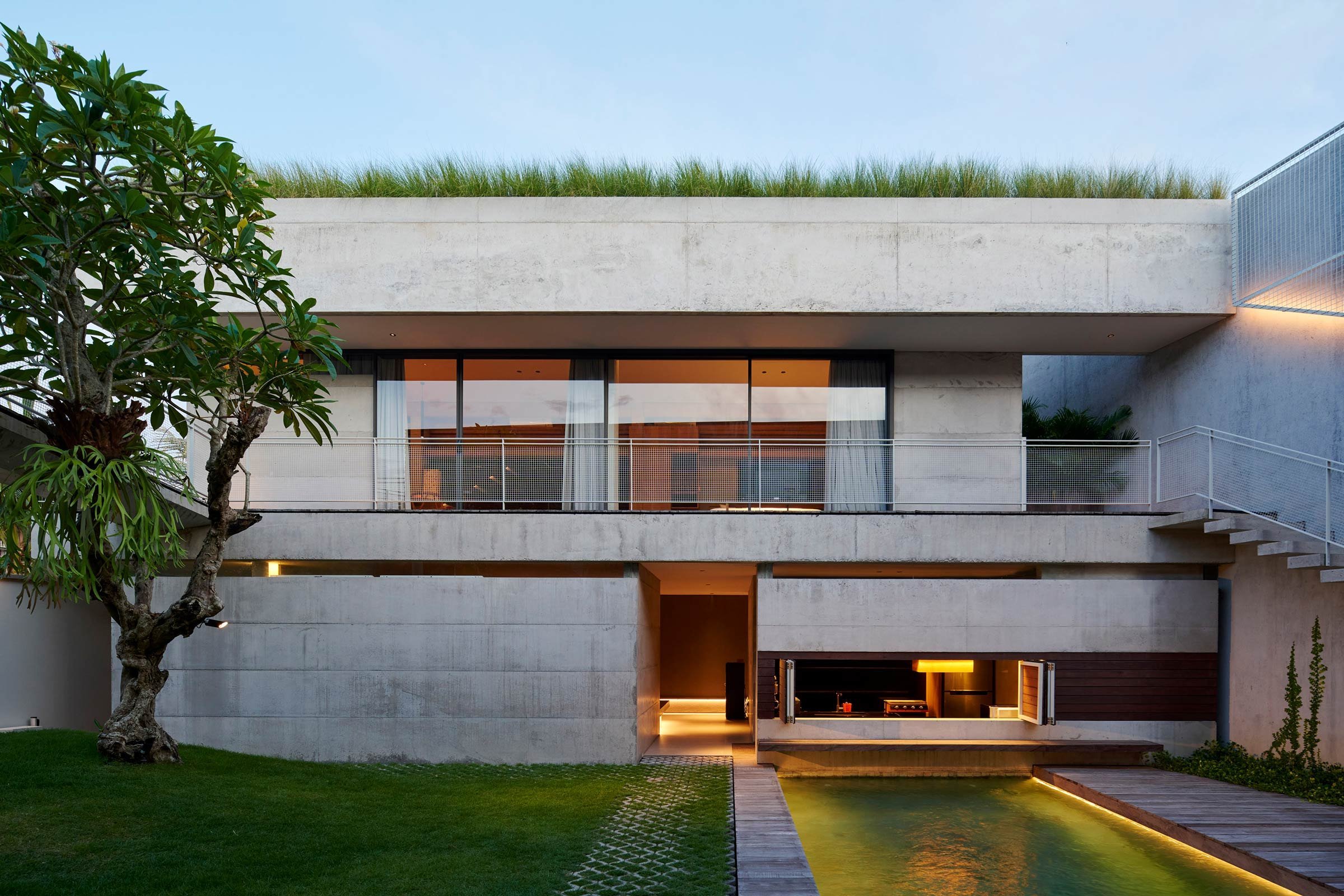Endless Summer at Uluwatu Surf Villas

Alexis Dornier has designed three striking villas on Bali’s Bukit Peninsula that marry traditional Indonesian architecture and materials with mid-century modern design, and beautifully embody the laid-back culture and ethos of the area
A hundred years ago, the chains of undulating mountains and lush, fertile lowlands of eastern Java were covered in majestic, traditional Javanese houses with perfectly pitched limasan and joglo roofs.
These vernacular Dutch teak and ironwood beauties had long intrigued entrepreneur Tim Russo, an American surfer based on Bali’s Bukit, the rugged, sun-bleached and slipper-shaped peninsula that dangles off the island’s most southern point. This little slice of paradise is home to some of the island’s most sublime sunsets and storied waves, and has been an idyll for surfers since the 1971 release of cult surf film Morning of the Earth. Its dreamy montages of Uluwatu’s mythical breaks heralded a new era of surf tourism in Bali, luring in professional surfers from all corners of the globe and strengthening a local community of Indonesian surfers who’d ridden the Bukit’s wild barrels for generations.
Russo, who’d learned to surf in the icy Atlantic waters of the East Coast, was one such nomad enticed by Uluwatu’s swell and free-spirited energy. The landscape didn't hurt either: ancient Hindu temples perched atop dramatic cliffs that drop down to the roaring ocean below, otherworldly limestone plateaus, twisting roads lined with frangipanis and warung, and cobbled stairwells that lead down to golden-sand beaches.
About a decade ago, Russo came across a small resort of six thatch-roofed coconut wood villas for lease — but it was really the backdrop that convinced him to make a go of something on the Island of the Gods. The site lead right down to a magical scene of towering cliffs over secluded coves and a private entrance to Uluwatu’s five most famous breaks. Russo, together with local partners, took over the lease and Uluwatu Surf Villas was born. Up until then, the resort was more of an in-the-know hang out for the Bukit’s surf set, but slowly Russo’s vision for a more design-focused, pioneering property began to materialise.
A striking new outdoor yoga shala was opened, as was South American-inspired restaurant Mana. Russo had long admired the old teak homes he encountered on his travels around the Indonesian archipelago, but it was while on holiday in Java several years after opening his resort that he developed a serious interest in the country’s traditional architecture, when a friend introduced him to villagers who were planning to break down and sell their traditional teak homes. Collecting these materials became an obsession for Russo, and with the help of local woodworkers he learned how to deftly dismantle the homes, transport the slabs of timber back to Bali and store them safely.
In 2018, conditions were ripe to develop a prime parcel of land that slopes gently down to the edge of Uluwatu’s famous cliffs, so Russo commissioned Bali-based, German-born architect Alexis Dornier to create a bold new spin on the traditional Javanese home, blending all of the collected antique wood with Russo’s other passion — mid-century modern design — across three striking new villas.
‘The inspiration for everything really sprung from the raw materials — I gave this as a rule for the architects. It was very important for me that the project innately references the stark beauty of the Bukit’s natural landscape,’ Russo says. For these new villas, this translated into traditional and durable kayu besi (ironwood) shingle roofs — originating in Borneo hundreds of years ago but now ubiquitous around the archipelago. Plenty of reclaimed Javanese teak was juxtaposed with raw sandstone and limestone, along with delicate feature walls made of coral, a nod to the striking reef break below.
‘I wanted to find a way to blend Alexis’ more modern architectural designs with the natural surroundings and the vibe of the original surf villas,’ Russo explains. For Dornier, natural limestone became the common denominator threaded throughout the project. ‘I’m such a big fan of the stone — it’s so abundant on the Bukit and gives you this almost rustic, Alpine feel,’ Dornier says. The two-bedroom House Aperture, tucked up higher on the hill, is a study in tropical modernism flooded in natural light: all lofty ceilings, skylights, open-air courtyards and sliding glass doors that ventilate and seamlessly blend the outside with in.
The four-bedroom House Puri-Bukit, also up on the hill, was designed with shared living in mind, reformulating a traditional Asian building style with a contemporary approach to craftsmanship. The piece de resistance, though, is surely House Carbon, a 230-square-metre, four-bedroom villa that faces out to those spectacular cliffs. With its entrance through an inconspicuous passageway at the rear, Dornier’s intention was for a ‘slow reveal’. ‘This is surely the best view in Bali, but we don’t want it to be easy for the spectator — we wanted to have a space that evolved and moved around,’ the architect says. ‘We like to suggest architecture that is more of an understatement. So you squeeze through this narrow walkway, which opens up in the living area where you’re greeted by the ocean views and the horizon in an area still sheltered by this fantastic shading element.’ Dornier is referring to the stunning geometric section of teak that juts out over the diamond-shaped pool, resting on stone cladded walls, that bears a resemblance to a similar feature in John Lautner’s 1963 Sheats-Goldstein house in California.
In fact, House Carbon’s deliciously retro 70s vibe was inspired by a shared love the pair has for the structure made famous in The Big Lebowski — Russo is a big fan of the film, Dornier of the starchitect. Russo even hired a team of woodworkers to fashion low-slung, sculptural 70s furniture out of the Javanese teak he had stored, while the colourful, pop art paintings of Californian artist Andy Davis and handmade teak surfboards line the walls.
‘I believe a sense of place is the fundamental driver of architecture,’ Dornier concludes. ‘We really wanted to embody the magical, laid-back culture and community that has evolved here at Uluwatu, and to capture this special moment in time.’
Text / Claire Knox
Images / Architecture: Kie









